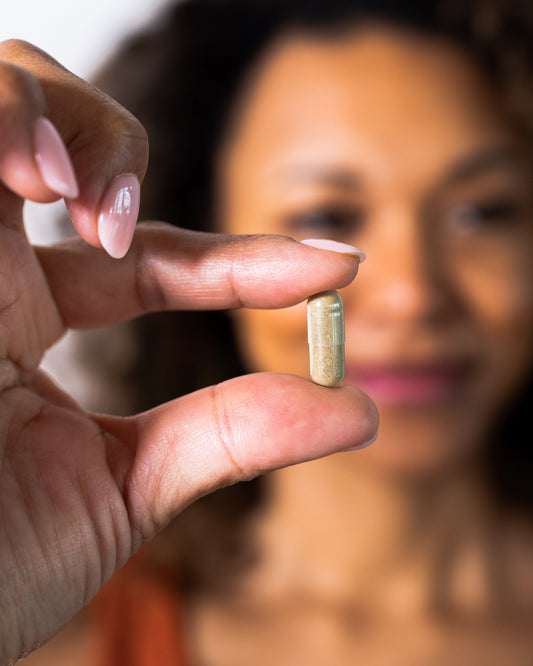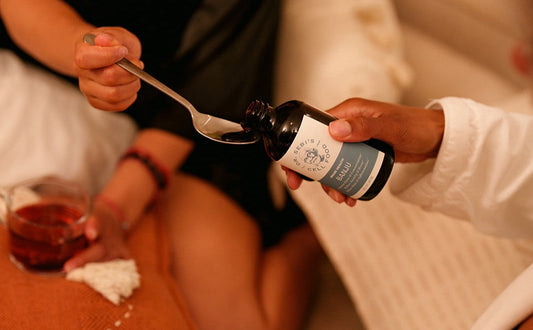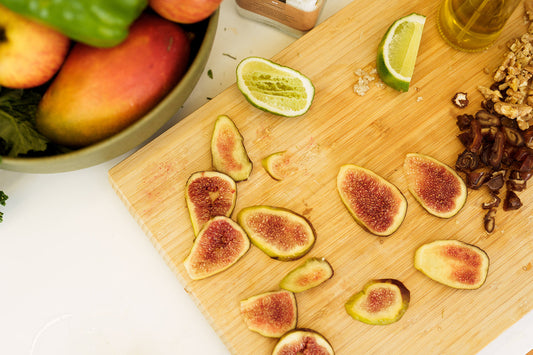When it comes to personal presentation, few things make a statement quite like a well-groomed beard. Whether you sport a neatly trimmed goatee or let your facial hair flow freely, your beard is an extension of your unique personality.
But there's more to beard grooming than just looks — it's about caring for your facial hair and skin with all-natural products.
Below, we’ll cover the basics of the art of beard grooming that will leave you feeling confident, dapper, and ready to face the world. Grab your grooming tools and shape a beard that's as polished and individualized as you are.
How to Grow a Beard
Growing a beard requires patience and care. While genetics play a significant role in determining beard growth, there are steps you can take to encourage healthy and fuller facial hair:
- Embrace the Process: Resist the urge to trim or shape it too soon. Allow your facial hair to grow freely for at least 4 to 6 weeks to see how it develops.
- Eat Well: Consume a balanced diet rich in nutrients and minerals, as deficiencies can affect hair growth. Some of the best foods for hair growth include berries, avocado, nuts, and seeds.
- Care for Your Skin: Keep your face clean by washing it regularly with a gentle cleanser or beard-specific shampoo. Exfoliating once or twice a week can also help remove dead skin cells and unclog hair follicles.
- Nourish Your Beard: Use a high-quality beard oil or balm to moisturize your beard and prevent dryness and itchiness. Look for products that contain natural ingredients such as jojoba oil, argan oil, and grapeseed oil.
- Roll, Brush, or Comb Regularly: Using the right tools, like a derma roller can help create new growth. Brushing or combing your beard daily can help distribute natural oils and stimulate blood circulation, which may promote hair growth. It can also help train your facial hair to grow in the desired direction.
- De-Stress: Stress can affect beard growth, so try to manage stress levels through relaxation techniques, exercise, or activities you enjoy.
- Use a beard oil: Dr. Sebi's Beard Oil has been formulated to strengthen your beard, prevent breakage, and promote growth.
How to Trim a Beard
Maintaining a well-groomed beard is essential for a polished and tidy look. Here's a step-by-step guide on how to trim and shape your facial hair:
- Prepare the Tools: You’ll need a quality beard trimmer or scissors, a comb, and a mirror. Ensure that your tools are clean and properly maintained.
- Start with Dry, Untangled Hair: Make sure your beard and mustache are fully washed and dried. Then, comb through your facial hair to remove any tangles or knots.
- Determine Your Desired Length: Consider your personal style and facial features. Try starting with a longer length and gradually trim.
- Trim Your Beard
- Use the trimmer or scissors to trim the bulk of your beard, working in the direction of hair growth.
- Start with a longer guard or length setting and gradually decrease if needed.
- Trim along the natural contour of your face, maintaining an even length on both sides.
- Shape Your Beard
- Use a smaller guard or carefully trim along the edges to create clean lines.
- Pay attention to the neckline, cheeks, and any areas that require precision.
- Use a comb to guide the trimming process and ensure even results.
- Trim Your Mustache: Comb your mustache downward and trim any stray or overgrown hairs using small, precise snips. Be cautious not to cut off too much at once. Use mustache scissors for detailed trimming, especially around the upper-lip area.
- Check for Symmetry: Step back and assess the symmetry of your beard and mustache. Make any necessary adjustments to ensure both sides are even.
- Clean Up and Final Touches: After trimming, wash away any loose hairs and clean your tools. Apply a small amount of beard oil or balm to moisturize your facial hair.
How to Keep Your Beard Soft
Regularly cleanse your beard with a gentle, natural beard shampoo or cleanser to remove dirt, excess oil, and any build-up that may contribute to itchiness. Avoid using harsh, chemical-laden products that can strip away natural oils and irritate the skin.
Next, keep your beard moisturized. Dryness often leads to itchiness, so use a high-quality beard oil or balm that contains ingredients like jojoba oil, argan oil, or shea butter. Consider using a natural beard conditioner or softening cream to make your beard more manageable and less prone to itchiness.
Regularly comb or brush your beard to distribute the natural oils evenly and prevent any tangles or knots that may cause discomfort. Lastly, avoid scratching or picking at your beard, as it can further irritate the skin. Instead, gently massage the itchy areas with your fingertips.
Try This Facial Hair Treatment
If you're looking for a natural, organic, and effective solution for keeping your facial hair healthy, try Dr. Sebi’s Beard Oil.
With its unique blend of oils and extracts, Dr. Sebi's Beard Oil can help moisturize and protect your facial hair. It's rich in nutrients that help strengthen hair and promote growth, and jojoba oil, which helps moisturize and protect the skin.
And unlike many commercial hair products that contain harsh chemicals and synthetic fragrances, Dr. Sebi's Hair Food Oil is made with only the highest-quality natural and organic ingredients. It's free from sulfates, parabens, and other harmful chemicals, so you can feel good about what you're putting on your facial hair.
Frequently Asked Questions
1. What’s the best way to grow a beard fast?
While genetics largely determine the pace at which your beard grows, there are a few things you can do to facilitate the process. First, be patient. Growing a beard takes time, so resist the urge to trim or shape it prematurely.
Secondly, make sure you eat a balanced diet rich in vitamins and minerals, engage in regular exercise, and get sufficient sleep, which all contribute to overall hair health.
Additionally, consider incorporating natural beard growth products into your routine. Beard oils and balms containing ingredients like eucalyptus, jojoba, and argan oil can help nourish the hair follicles and promote healthy growth.
2. How do you trim sideburns?
Start by washing your face and combing your sideburns to ensure they're clean and tangle-free. Determine your desired length and use a trimmer or scissors to carefully trim your sideburns, following the natural growth pattern.
Check for symmetry and make any necessary adjustments. Blend the sideburns with the rest of your hair for a seamless look. Finally, comb your sideburns and consider applying a small amount of beard oil or balm to keep them groomed. If you’re unsure, visit a professional barber for guidance.
3. What should you do after you shave or trim your beard?
After shaving or trimming your beard, rinse your face, pat it dry gently, and apply a soothing aftershave oil, balm, or moisturizer. Treat any cuts or irritated areas with antiseptic ointment.
Clean and store your grooming tools properly. If you trimmed your beard, comb or brush it to maintain a neat appearance. For a shaved beard, consider starting a new beard care routine using natural products.


















































